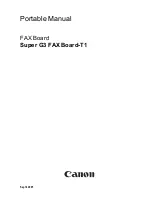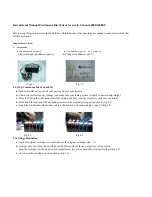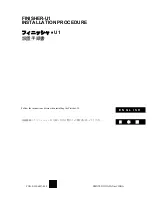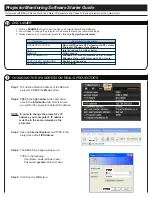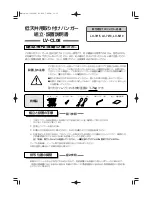
- 20 -
E
N
G
L
I
S
H
VALVE TIGHTNESS TEST
Intake and exhaust: perform the tests one after the other.
Pour gasoline into the pipeline until it is filled. Use a compressed air gun to blow along the head of the particular valve and check whether air
bubbles appear inside the pipeline.
If so, the valve must be disassembled and grinding performed even if this procedure has already been carried out. It may also be necessary to
repeat the procedure as many times as needed until the air bubbles no longer appear.
When performing the test, check to ensure that the oil seal on the guide is not leaking fuel. If there is leakage, replace it with a new one.
USEFUL SUGGESTIONS
We advise you to grind in the exhaust and intake valves whenever the head is disassembled. Grinding must be carried out using the specific tool
and a satisfactory fine abrasive paste designed for grinding valves.
I
T
A
L
I
A
N
O
COLLAUDO TENUTA VALVOLE
Aspirazione e scarico: effettuare prove una di seguito all’altra.
Versare benzina nel condotto fino a riempirlo soffiare con una pistola ad aria compressa attorno al fungo della valvola in esame e controllare se
all’interno del condotto appaiono delle bollicine d’aria.
In caso affermativo occorre smontare la valvola ed effettuare la smerigliatura anche se questa operazione é già stata fatta, ed eventualmente
ripetere l’operazione fino a quando il fenomeno delle bollicine non verrà a cessare.
Durante la prova controllare che il paraolio applicato alla guida non lasci fuoriuscire carburante altrimenti sostituirlo con uno nuovo.
CONSIGLI UTILI
Si consiglia di smerigliare le valvole di scarico e aspirazione ogni qualvolta si smonta la testata.
La smerigliatura va eseguita con apposito attrezzo e con una buona pasta abrasiva fine specifica per smerigliatura valvole. Per migliorare il
D
E
U
T
S
C
H
DICHTHEITSPRÜFUNG DER VENTILE
Ansaugtrakt und Auslass: die Prüfungen eine nach der anderen durchführen.
Die Leitung vollständig mit Benzin füllen, mit einer Pressluftpistole um den Ventilteller des zu prüfenden Ventils blasen und prüfen, ob sich in der
Leitung Luftbläschen bilden.
Ggf. das Ventil ausbauen und erneut schleifen; den Vorgang so lange wiederholen, bis sich keine Luftbläschen mehr bilden.
Während der Prüfung sicherstellen, dass die Ölabdichtung in der Führung keinen Kraftstoff durchlässt, ansonsten mit einer neuen ersetzen.
NÜTZLICHE HINWEISE
Die Auslass- und Ansaugventile sollten bei jedem Ausbau des Zylinderkopfs geschliffen werden.
Das Schleifen ist mit Hilfe eines geeigneten Werkzeugs und einer guten und feinen Schleifpaste für Ventile vorzunehmen. Für eine bessere
Motorleistung ist es ratsam, perfekte Anschlüsse und eine optimale Polierung der Ansaug- und Auslasskanäle zu bewerkstelligen. Der optimale
























